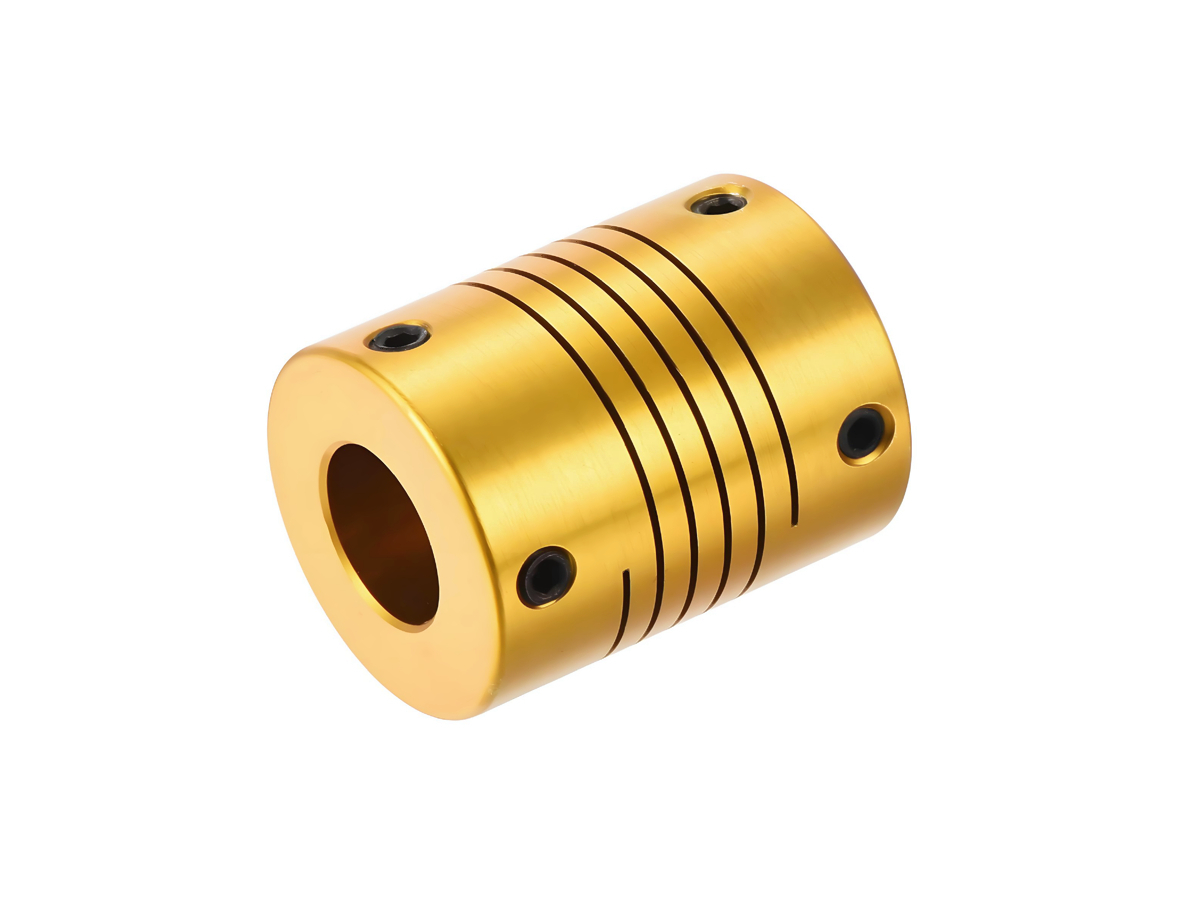Copper C510 Phosphor Bronze CNC Machining for Automotive and Industrial Equipment
Introduction
The automotive and industrial equipment sectors demand robust materials offering excellent strength, corrosion resistance, wear resistance, and good machinability. Copper C510 Phosphor Bronze excels in these characteristics, providing remarkable fatigue resistance, high tensile strength (up to 450 MPa), excellent spring properties, and superior resistance to wear and corrosion. These features make it ideal for manufacturing automotive components such as bearings, bushings, valve guides, and industrial equipment parts including gears, springs, and connectors.
Employing advanced CNC machining, manufacturers precisely fabricate Copper C510 Phosphor Bronze parts, achieving complex geometries and precise dimensional accuracy. CNC machining ensures reliable performance, consistent quality, and efficient production, significantly improving component durability and operational reliability in demanding automotive and industrial applications.
Copper C510 Phosphor Bronze for Automotive and Industrial Applications
Material Performance Comparison
Material | Tensile Strength (MPa) | Yield Strength (MPa) | Hardness (HV) | Typical Applications | Advantage |
|---|---|---|---|---|---|
450-520 | 270-350 | 140-180 | Bearings, bushings, springs | Excellent fatigue resistance, wear resistance | |
480-550 | 310-380 | 150-190 | High-stress springs, connectors | Higher strength, excellent spring properties | |
340-470 | 170-310 | 80-120 | Fittings, connectors | Good machinability, moderate strength | |
1100-1300 | 965-1035 | 360-420 | High-stress contacts, precision springs | Very high strength, excellent fatigue life |
Material Selection Strategy
Selecting appropriate copper alloys for automotive and industrial equipment involves evaluating mechanical strength, wear resistance, fatigue performance, and specific application requirements:
Automotive bearings, valve guides, bushings, and general springs require high fatigue resistance, moderate-to-high strength (450-520 MPa), and excellent wear resistance utilizing Copper C510 Phosphor Bronze, optimizing durability and operational lifespan.
Highly stressed automotive connectors, precision springs, and components needing increased tensile strength (up to 550 MPa) with excellent elasticity prefer Copper C521 Phosphor Bronze, ensuring superior spring performance and reliability.
Standard automotive fittings, connectors, and less critical industrial components demanding good machinability and moderate strength (340-470 MPa) typically use Brass C360, offering cost-effective production and adequate performance.
High-performance spring contacts, high-stress precision components, and critical applications requiring exceptional tensile strength (up to 1300 MPa) and superior fatigue life select Copper C172 Beryllium Copper, maximizing mechanical durability under demanding conditions.
CNC Machining Processes
Process Performance Comparison
CNC Machining Technology | Dimensional Accuracy (mm) | Surface Roughness (Ra μm) | Typical Applications | Key Advantages |
|---|---|---|---|---|
±0.02 | 1.6-3.2 | Simple bushings, washers | Economical, consistent production | |
±0.015 | 0.8-1.6 | Rotational parts, valve guides | Enhanced precision, fewer setups | |
±0.005 | 0.4-0.8 | Complex automotive components, precision gears | Superior accuracy, excellent surface finish | |
±0.003-0.01 | 0.2-0.6 | High-precision springs, connectors | Maximum precision, complex geometries |
Process Selection Strategy
Choosing CNC machining methods for Copper C510 Phosphor Bronze parts involves complexity evaluation, dimensional accuracy requirements, and specific performance needs:
Simple automotive bushings, washers, and straightforward industrial components requiring moderate precision (±0.02 mm) economically benefit from 3 Axis CNC Milling, providing reliable quality at competitive costs.
Rotational parts, valve guides, moderately complex fittings, and components demanding improved precision (±0.015 mm) efficiently utilize 4 Axis CNC Milling, enhancing production efficiency and dimensional accuracy.
Complex automotive components, precision industrial gears, and intricate equipment parts needing high accuracy (±0.005 mm) and superior surface finishes (Ra ≤0.8 μm) significantly benefit from 5 Axis CNC Milling, optimizing functionality and component life.
High-precision automotive springs, detailed industrial connectors, and intricate parts requiring extreme accuracy (±0.003 mm) leverage Precision Multi-Axis CNC Machining, maximizing reliability and precision.
Surface Treatment
Surface Treatment Performance
Treatment Method | Corrosion Resistance | Wear Resistance | Max Operating Temp (°C) | Typical Applications | Key Features |
|---|---|---|---|---|---|
Electroplating (Nickel, Tin) | Exceptional (≥1000 hrs ASTM B117) | High | Up to 250 | Connectors, bearings | Enhanced wear resistance, corrosion protection |
Excellent (~900 hrs ASTM B117) | Moderate-High | Up to 300 | Precision springs, valve components | Smooth finish, reduced friction | |
Excellent (≥1000 hrs ASTM B117) | Moderate | Up to 200 | Internal components, precision fittings | Surface purity, corrosion resistance | |
Very Good (≥800 hrs ASTM B117) | Moderate | Up to 120 | External housings, decorative parts | Attractive appearance, corrosion protection |
Surface Treatment Selection
Surface treatments for Copper C510 Phosphor Bronze automotive and industrial parts depend on corrosion protection, wear resistance, and operational durability:
Bearings, connectors, and automotive fittings requiring improved wear resistance and robust corrosion protection significantly benefit from Nickel or Tin Electroplating, enhancing component lifespan and reliability.
Precision automotive springs, valve components, and intricate equipment parts needing smooth finishes and friction reduction prefer Electropolishing, improving operational efficiency and reducing wear.
Internal automotive components, precision industrial fittings, and sensitive applications demanding superior corrosion resistance benefit from Passivation, maintaining surface purity and enhancing reliability.
External automotive housings, industrial decorative components, and visible fittings requiring corrosion resistance and aesthetic appeal utilize Clear Protective Coating, effectively balancing performance and appearance.
Quality Control
Quality Control Procedures
Precise dimensional verification using Coordinate Measuring Machines (CMM) and optical comparators.
Surface roughness inspection using high-precision profilometers.
Mechanical property tests (tensile, hardness, fatigue) according to ASTM standards.
Corrosion resistance verification via ASTM B117 (Salt Spray Test).
Non-destructive testing (NDT) including ultrasonic and radiographic inspections.
Comprehensive documentation compliant with ISO 9001 and automotive (IATF 16949) and industrial equipment standards.
Industry Applications
Copper C510 Phosphor Bronze Component Applications
Automotive bearings, valve guides, and bushings.
Industrial gears, precision springs, and fittings.
High-performance connectors and electrical contacts.
Wear-resistant equipment parts and actuator components.
Related FAQs:
Why use Copper C510 Phosphor Bronze in automotive and industrial applications?
How does CNC machining improve Copper C510 component accuracy?
What automotive and industrial parts best utilize Copper C510 Phosphor Bronze?
Which surface treatments enhance Copper C510 component durability?
What quality standards apply to CNC machining Copper C510 Phosphor Bronze?

